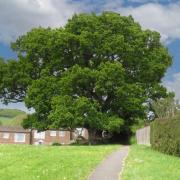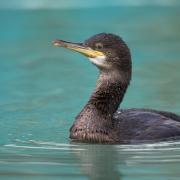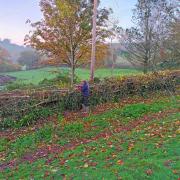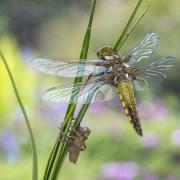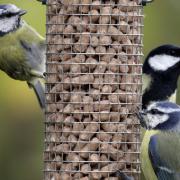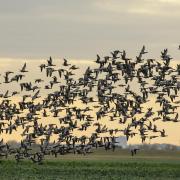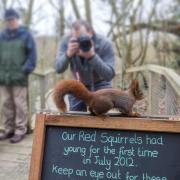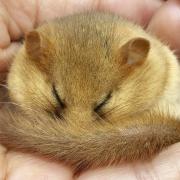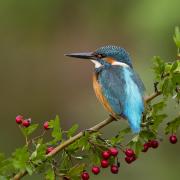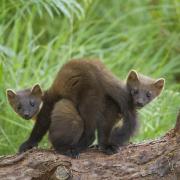What signifies the start of summer for you? Is it the first barbecue, the smell of new-mown grass or the arrival of swifts high in our skies?
By Steve Hussey, Devon Wildlife Trust
In May and June I’ll be training my eyes and ears on the sky above, looking through the fog of smoking sausages, and separating out the sound of lawnmowers to see and hear the arrival of the enigmatic swift. Why enigmatic? Well, swifts are difficult birds to get to know. It’s as if their lives and habits have been forged with the sole purpose of staying out of our reach and understanding.
Swifts are, of course, migrants. They spend only a small portion of their year here, arriving in May and leaving in August. For the larger part of their lives these are not ‘British’ birds but residents of southern Africa.
Then there are their remarkable lifestyles. Swifts spend their lives on the wing. They feed in flight, drink in flight, collect nest materials in flight, and even mate in flight – the first and only natural members of the ‘mile-high club’. One of the most common sights of a summer’s evening is groups of swifts spiralling higher and higher above the ground. The birds climb until they become distant dots against the fading blue light of the sky. At heights of up to 10,000ft they will then sleep, shutting down parts of the brain, safely out of the reach of predatory peregrine falcons, but continuing to fly, correcting their positions so that they wake in the same place.
Contrary to widespread belief, swifts do sometimes come to ground, and it is here, around our homes, during the bird’s breeding season, that they spend the only sustained periods of their lives not on the wing. In contrast to their mastery of aerobatics, swifts are cumbersome movers having to rely on stubby legs. The birds use cavities in buildings to make their nests, constructing a shallow cup of straw and other dry plant material cemented into shape by their own saliva. Some of these nest sites will be generations old with breeding birds re-using them throughout lives that can stretch to 20 years.
Two or three eggs are laid to be incubated by both mum and dad. After 19 days, the eggs hatch and the parents leave the nest, returning frequently to feed their young with tightly packed balls of miniature insects all collected in flight. It’s been estimated that an adult swift with young to feed will capture up to 10,000 insects each day!
After five to eight weeks, young swifts are ready to leave their nests. On taking to the wing for the first time they are wholly independent of their parents. They waste little time in heading south to their African homes, leaving us to await the return next year of our summer bird.
Exeter Swift Survey
The numbers of swifts reaching our shores are in steep decline. One major problem is a falling number of suitable nest sites: modern housing doesn’t have the crevices and cracks that the birds require.
This summer, Devon Wildlife Trust, along with Exeter City Council and the RSPB, are launching a new project to highlight the plight of swifts in Exeter. We want as many people as possible look and listen out for swifts and record their sightings using a national swifts inventory, which can be found at www.rspb.org.uk/thingstodo/surveys/swifts/index.asp (If you don’t have internet access, call DWT on 01392 279244 and ask for a ‘swift spotters’ leaflet.)
Information from the inventory will be used to map the presence of swifts in Exeter. The map will help DWT identify parts of the city where the introduction of new nesting sites will help maintain and, we hope, increase numbers of the birds.
If you don’t live in Exeter you can still help by contributing your swift sightings to www.rspb.org.uk/thingstodo/surveys/swifts/index.asp
How to spot a Swift
Colour: In flight and at a distance swifts appear black, but closer inspection shows them to be a beautiful chocolate-brown with a dull-white throat.
Shape and size: This fast-flying bird has a very distinctive outline. The poet Edward Thomas compared it to a bow ready to fire its arrow; others liken its shape to an anchor. Its flight outline is more crescent-shaped than that of either a swallow or martin.
Where to look: Swifts are the much more commonly seen in town and city centres than swallows and martins are. Traffic pollution affects the number of flying insects at lower levels, but a swift’s high-flying habit allows them to chase prey in clearer skies high above. Evening is a good time to see groups of swifts circling high above city streets.
Listen: The swift’s screaming call matches its high-speed flight to make it one of the most distinctive sounds of summer.
For more information on swifts, see www.swift-conservation.org





